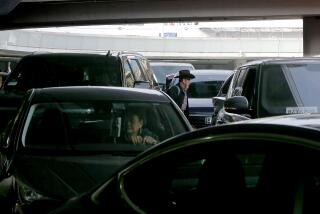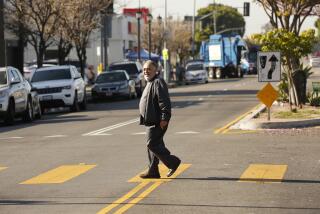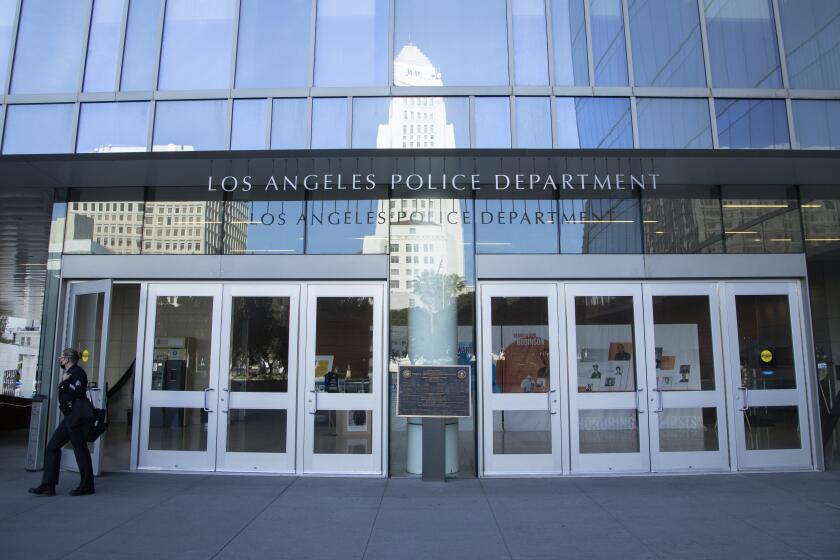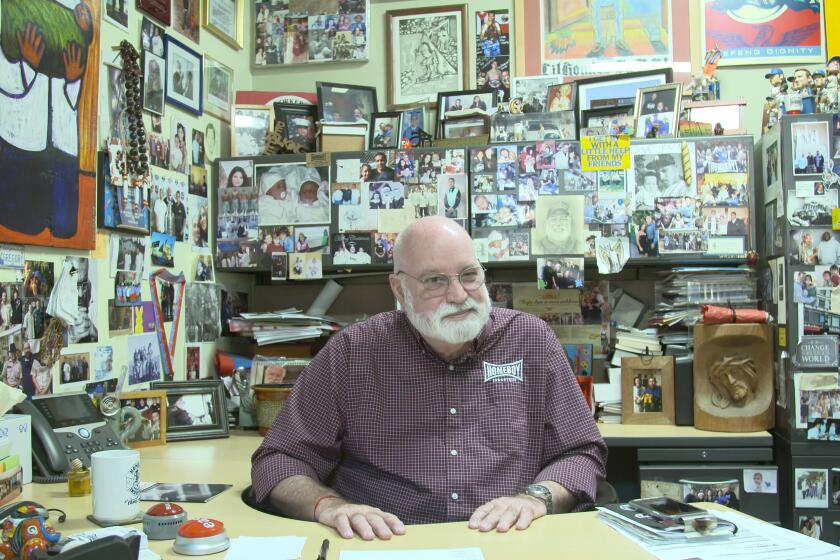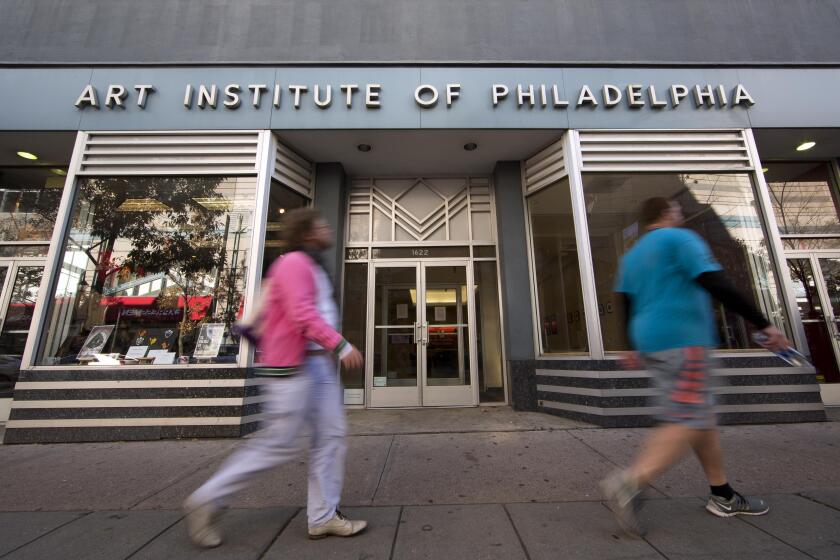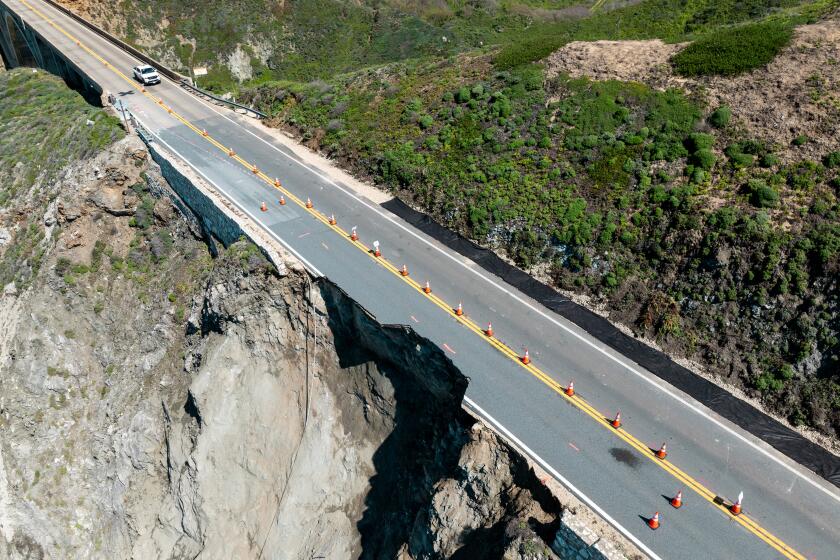For second 405 Freeway closure, less-dire traffic message goes out

Last year in the run-up to Carmageddon, officials were downright apocalyptic about what the full closure of the 405 Freeway through the Sepulveda Pass would mean.
“It will be an absolute nightmare,” Los Angeles Mayor Antonio Villaraigosa warned.
“Avoid the area like the plague,” Councilman Paul Koretz advised.
But after all the dire warnings, the traffic mayhem never materialized. With another closure of a 10-mile section of the 405 planned for this weekend, officials are subtly retooling their message and hoping they can get similar results a second time around.
The fears promoted by public officials, with media help, in the run-up to last July’s freeway shutdown clearly worked. But that very success carries the risk that this time motorists may ignore appeals to stay away. The closure, starting early Saturday morning, will allow the remainder of the Mulholland Bridge to be demolished as part of a $1-billion project that includes adding a carpool lane to the busy Westside freeway.
“The challenge for officials is actually greater this time because of people saying, ‘We’ve heard this disaster message before,’” said Brian Taylor, coauthor of a UCLA study titled “Why it wasn’t Carmageddon” prepared for the mayor’s office.
The researchers’ conclusion? “Dramatic messages of fear” will not work in the Carmageddon sequel. And public officials should embrace warmer rhetoric that appeals to civic pride, instead of cajoling motorists to stay away.
Crafting a more nuanced admonition entails “an interesting and complex social phenomenon,” says Martin Wachs, coauthor of the study. The trick, researchers say, is to sound a loud enough alarm in the coming days to get people’s attention and blend it “with extensive, hopeful messaging” that can reprise the cooperation achieved during Carmageddon I.
“We can’t do what we did last time,” Villaraigosa recently acknowledged. “This time around, we’re not going to say, ‘Folks, look, we’re going to have the worst traffic ever.’
“What we’re going to say is: ‘What about another day without a car in L.A.? What about Angelenos accepting the challenge to stay out of their car?’”
No one is expecting calamity this time around. Transportation experts predict traffic volumes similar to or slightly greater than last year.
Still, the Metropolitan Transportation Authority is trying to spread word about the closure even more widely than last year, according to spokesman Marc Littman. The agency has spent about $150,000 on newspaper, online and radio advertising related to the shutdown, compared with about $100,000 last year, he said. Officials also have held about a dozen press conferences, issued public service announcements and have enlisted various elected officials and government agencies to post Carmageddon information on their websites.
More than 50 Clear Channel billboards are back in action. So are the electronic signs on freeways across the region — albeit with a slightly toned-down warning. A year ago, the signs flashed “EXPECT BIG DELAY.” Now they simply say “EXPECT DELAY.” A Caltrans spokeswoman said the wording change “was based on experience last year. We did expect big delays last year, and they didn’t materialize.”
This year, the agency is “hoping to keep the message accurate. We DO expect delays,” she said in an email.
The news media, too, have dialed back coverage after predictions last summer — including that cars could be backed up to the Mexican border — proved overblown.
One difference this time is that the second closure hasn’t attracted international media attention, Littman said. Overall, as a news story and in terms of public awareness, a 405 closure is no longer “uncharted territory,” he said.
Some officials worry that if the public tunes out or discounts their pleas, Carmageddon could yet live up to its name. “There’s still a lot of anxiety associated with a closure of this magnitude for all of the agencies involved,” said Littman’s colleague Dave Sotero. “We just don’t want [the public] to become complacent.”
One new tactic is promoting financial incentives intended to keep residents away from the closure area and encourage community engagement.
Westside businesses complained about sizable dips in income last July when people stayed home that weekend. This year, Metro is touting an interactive map on its website that includes about 300 businesses where patrons can receive 10% to 50% discounts during the closure. Also starting Wednesday, the Los Angeles Tourism & Convention Board plans to begin tweeting out 405 things to do Saturday and Sunday.
Metro’s Carmageddon slogan has been tweaked, as well. “Plan ahead. Avoid the area, or stay home” has become “Plan ahead. Avoid the area, or eat, shop and play locally.”
Jay Handal, owner of San Gennaro Cafe in Brentwood — a quarter mile west of the closure — says the revised pitch is smarter. On Carmageddon Saturday last year, only about eight customers showed up at his restaurant — less than a tenth the crowd he normally gets on a summer Saturday, he said.
“We ended up using our elected officials as rabbis,” he said. “Someone to cry to and feel better.”
Handal said his customers are aware of the potential for congestion this weekend. He predicts many will stay out of their cars without heavy-handed warnings from city leaders.
Some experts like the softer sell.
“I don’t think that fear plays a good role in any public message,” said Dennis S. Mileti, a professor emeritus of the University of Colorado at Boulder and an expert on risk communication.
The most effective approach is the simplest, he said. Tell people what to do, how to do it, when to do it and what the consequences will be if you fail.
“I’m just going to bet that people who live in the greater Los Angeles area understand the concept of traffic and can in their own minds imagine what traffic nightmares might exist if they tried to go near roads close to the 405 Freeway,” Mileti said.
Matt Corrigan, 30, of Sherman Oaks faked a dinner party on the empty freeway last summer for a photo that went viral. He isn’t planning any high jinks this time around. The atmosphere just isn’t as compelling.
“If they had come on Big Brother-style this time … nobody would listen,” he said.
A year ago, L.A. County Supervisor Zev Yaroslavsky was among the doomsday prognosticators. He has even been credited with coining the term “Carmageddon” for the closure. Now, he’s one of those trying to balance the carrot and the stick.
“We were successful [last year] because people cooperated,” he said. “We’re asking people to cooperate again.
“Cooperation means don’t come anywhere near the 405 corridor.”
More to Read
Start your day right
Sign up for Essential California for news, features and recommendations from the L.A. Times and beyond in your inbox six days a week.
You may occasionally receive promotional content from the Los Angeles Times.
